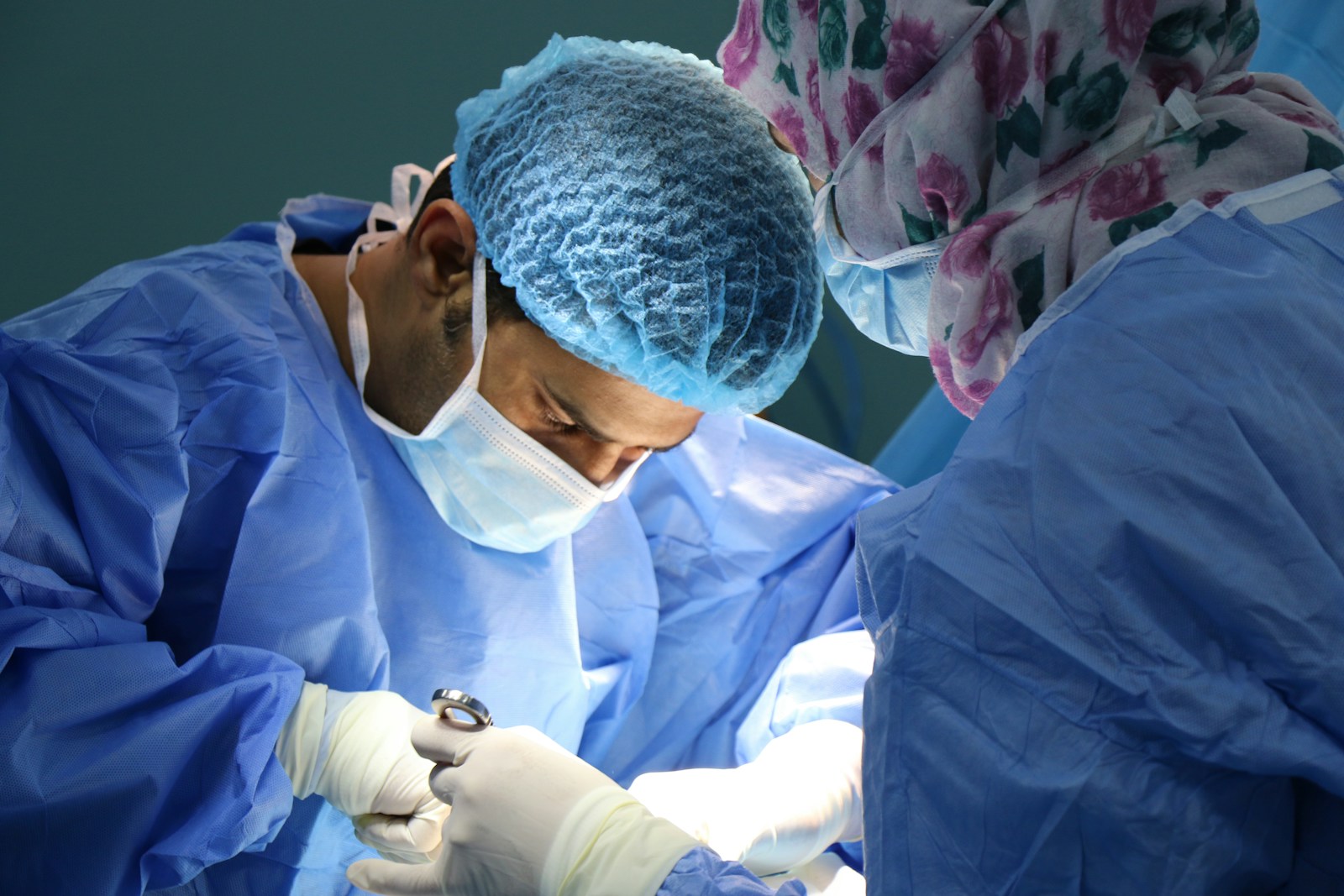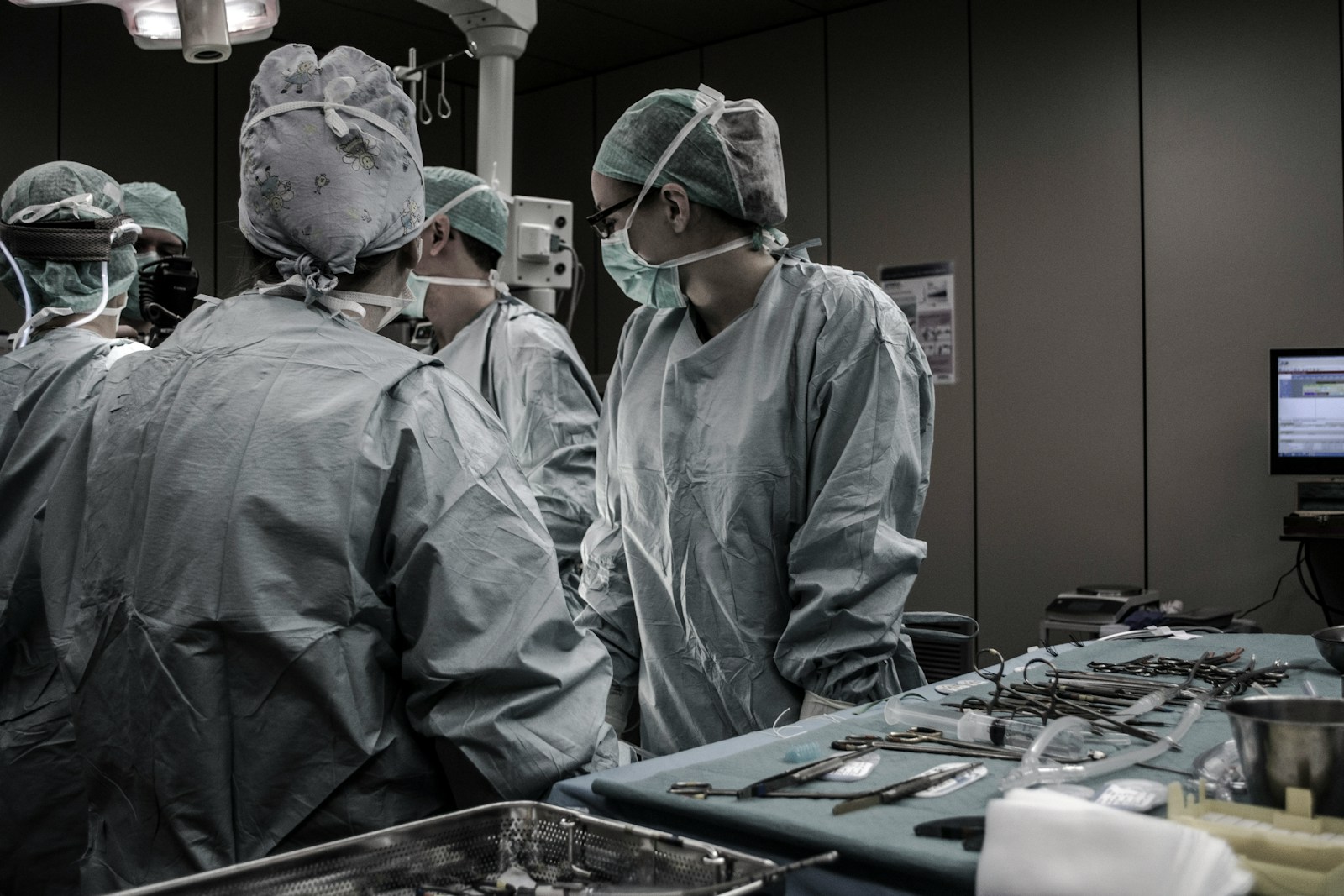In the domain of healthcare, the treatment of sciatica, a debilitating condition affecting the sciatic nerve, continues to evolve, offering a variety of medical procedures. These treatments range from non-invasive therapies to complex surgical interventions such as microdiscectomy or lumbar laminectomy. However, the effectiveness of these procedures and their capacity to provide long-term relief without significant complications remains a subject of intense research. As we explore this topic further, it is imperative to contemplate the potential implications of these procedures on patient outcomes and quality of life.
Understanding Sciatica
The patient’s comprehension of sciatica, a complex neurological condition characterized by pain radiating down the path of the sciatic nerve, is essential for effective management and treatment. This understanding should not only encompass its symptomatic manifestation but also the preventative measures that can be undertaken to mitigate its occurrence.
Sciatica prevention often requires lifestyle adjustments aimed at maintaining proper spinal alignment and reducing nerve impingement. Regular physical activity, specifically exercises that strengthen the core muscles supporting the spine, can help reduce the pressure on the sciatic nerve. In addition, maintaining a healthy weight helps lessen the mechanical stress on the spine.
In addition, correct posture, especially during prolonged sitting and standing, is crucial. Incorrect posture can exacerbate the compression on the sciatic nerve, leading to the onset or worsening of symptoms. Ergonomic workplace setups and proper lifting techniques are recommended.
Diet also plays a role in sciatica prevention. A balanced diet rich in anti-inflammatory foods may help manage inflammation that can contribute to sciatica pain.
Lastly, regular health checks and professional consultations can detect early signs of spinal issues that could potentially lead to sciatica. Informed patients can thus make timely interventions, fostering better outcomes.
Causes of Sciatica
Understanding sciatica’s prevention methods naturally leads to the exploration of its underlying causes, which are primarily related to conditions that provoke nerve impingement or irritation in the lower back. These conditions often arise from various health issues, lifestyle factors, or physical stressors that apply undue pressure on the sciatic nerve.
Recognizing these causes is integral for developing effective sciatica prevention strategies. A deeper comprehension allows for the planning of proactive measures and appropriate lifestyle modifications for sciatica. The most prevalent causes of this nerve impingement are:
- Lumbar Spinal Stenosis: A narrowing of the spinal canal in the lower back
- Degenerative Disc Disease: Breakdown of discs, which act as cushions between the bones in your spine
- Spondylolisthesis: A condition where one bone in your back slides forward over the bone below it
While these conditions are common, other factors such as obesity, sedentary lifestyle, and occupation-related stresses can also contribute to sciatica. By understanding these causes, implementing sciatica prevention strategies and making lifestyle modifications for sciatica becomes a more feasible and effective endeavor.
Symptoms of Sciatica
The manifestation of sciatica is characterized by specific symptoms that act as key indicators of this condition. The focus will now shift towards the discussion of these symptoms, particularly the distinctive pain associated with sciatica, along with an analysis of its severity and duration. This will facilitate a thorough understanding of the clinical presentation of sciatica.
Identifying Sciatica Pain
While it may vary from person to person, sciatica pain typically manifests as a sharp, burning sensation that radiates from the lower back down one leg. This pain often intensifies with movements such as sitting, standing, or walking. The Sciatica Risk Factors include age, obesity, sedentary lifestyle, and jobs that require heavy lifting. Sciatica Prevention Strategies involve regular physical activity, maintaining a healthy weight and good posture, and avoiding prolonged sitting or heavy lifting.
- Sciatica Pain: Marked by burning, tingling, or numbness in the lower back, buttocks, or leg on one side.
- Risk Factors: Includes age, obesity, sedentary lifestyle, and heavy lifting occupations.
- Prevention Strategies: Regular physical activity, maintaining good posture, avoiding prolonged sitting, and heavy lifting.
Severity and Duration
Moving from risk factors and prevention strategies, it is essential to contemplate the severity and duration of sciatica symptoms, which can significantly impact a patient’s quality of life. The severity of sciatica can range from mild discomfort to debilitating pain, often escalating with prolonged static postures such as sitting or standing. Duration, on the other hand, may vary from intermittent episodes to chronic persistence of symptoms, largely contingent on the underlying etiology. Sciatica prevention strategies, especially lifestyle modification impacts, play an instrumental role in managing these variables. Regular physical activity, ergonomic optimization, and weight management can mitigate symptom severity and shorten duration. Early intervention and sustained adherence to these preventative measures are key to enhancing the prognosis of sciatica.
Diagnosing Sciatica
Often, diagnosing sciatica involves a thorough physical examination and a detailed analysis of the patient’s medical history, with further diagnostic tests such as MRI or CT scans employed as necessary. During the physical examination, doctors typically look for signs of nerve root irritation, such as weakness in the lower extremities or reduced reflexes. The patient’s medical history, on the other hand, can reveal predisposing factors like a sedentary lifestyle or previous lumbar disc herniation, that might have led to the development of sciatica.
In the context of ‘sciatica prevention strategies,’ diagnosing sciatica is vital as it can guide lifestyle modifications. For instance, if a patient’s sciatica is linked to obesity, weight loss might be recommended. If it’s related to poor posture, ergonomics and posture correction might be advised.
The key components in diagnosing sciatica include:
- Physical examination: This involves testing the patient’s muscle strength, reflexes, and response to certain movements.
- Medical history review: This provides insights into potential risk factors and the onset of symptoms.
- Diagnostic imaging: MRI or CT scans can confirm the presence of a disc herniation or other spinal abnormalities causing sciatica.

Non-Surgical Treatment Options
Several non-surgical treatment options are available for patients suffering from sciatica, offering effective pain relief and promoting overall spinal health. Physical therapy, one of the primary treatment modalities, has numerous benefits, including strengthening the muscles supporting the spine, enhancing flexibility, and improving posture. The benefits of physical therapy extend beyond immediate pain relief, as it also aids in preventing future instances of sciatica.
Physical therapy may involve a range of exercises, from gentle stretches to cardiovascular and strength-building activities. These exercises are tailored to the individual’s specific needs and physical capabilities. The objective is to alleviate nerve root compression, the underlying cause of sciatica, thereby reducing pain and inflammation.
Alternative therapies, such as acupuncture, chiropractic adjustments, and massage therapy, have also shown promise in treating sciatica. Acupuncture, a traditional Chinese medicine technique, involves inserting fine needles at specific points on the body to stimulate healing. Chiropractic adjustments realign the spinal column, potentially relieving nerve pressure, while massage therapy can reduce muscle tension and promote relaxation.
These non-surgical treatment options, when used strategically, can greatly improve the quality of life for sciatica patients, reducing pain and enhancing overall functionality.
Sciatica Injections
While various non-surgical therapies offer substantial relief, patients suffering from severe or persistent sciatica may also benefit from a more direct approach such as sciatica injections. These injections aim to provide rapid relief by delivering medication directly to the inflamed nerve root. They are usually comprised of a local anesthetic and a corticosteroid, both of which work together to numb the area and decrease inflammation.
The injection types include:
- Epidural Steroid Injections: This is the most common type, where the medication is injected into the outer part of the spinal canal.
- Selective Nerve Root Block: This targets specific nerves that are inflamed.
- Facet Joint Injections: These are injected into the joints that connect the spine’s vertebrae.
While injections can provide substantial relief, they are not a cure for sciatica. The effect of injections can vary widely among patients, with some experiencing relief for weeks or even months, while others may find little to no relief. It’s important to explore alternate therapies alongside injections, such as physical therapy, chiropractic care, and lifestyle modifications, to manage sciatica symptoms more effectively.
Microdiscectomy for Sciatica
In cases where conservative treatments fail to provide relief, a surgical procedure known as microdiscectomy may be recommended for patients suffering from sciatica. This minimally invasive procedure is designed to remove a small portion of the offending herniated disc that is pressing on the sciatic nerve, hence causing pain, numbness, or weakness in the lower back and leg.
Patient experiences with microdiscectomy are generally positive, with a significant percentage reporting considerable relief from sciatica symptoms post-surgery. The procedure is performed under general anesthesia and typically lasts less than two hours. Post-operative recovery is relatively quick, with most patients returning to normal activities within weeks.
While microdiscectomy has proven effective for many sciatica patients, it is important to take into account that it is not the only surgical alternative available. The decision to proceed with this operation should be based on a thorough evaluation of the patient’s condition, including the severity of the symptoms, the duration of the pain, and the patient’s overall health status. It is also essential to take into consideration the potential risks and complications associated with the procedure, such as infection, nerve damage, and recurrence of symptoms. As with any medical decision, a detailed discussion between the patient and healthcare provider is essential.
Lumbar Laminectomy Procedure
The lumbar laminectomy procedure, a surgical intervention commonly employed to alleviate sciatica pain, will be the primary focus of this section. We will explore in detail the procedural steps, highlighting the potential risks associated with this form of treatment. The discussion will also extend to the recovery process following surgery, outlining expectations and necessary precautions.
Understanding Lumbar Laminectomy
Lumbar laminectomy, a thorough surgical procedure primarily focused on relieving pressure from the spinal nerves, requires a deep understanding of its detailed steps and potential outcomes. This procedure is commonly considered as a therapeutic intervention for patients struggling with debilitating symptoms of sciatica when conservative treatments fail to provide relief. However, laminectomy alternatives should be explored before opting for this invasive procedure.
Patient eligibility for lumbar laminectomy includes those suffering from severe pain, weakness, or numbness that limits daily activities, and doesn’t improve with non-surgical treatments. The procedure involves:
- The removal of the lamina, the back part of the vertebra that covers the spinal canal
- Decompressing the spinal nerves and spinal cord
- Stabilization of the spine, if necessary
Each case is unique and requires a tailored approach.
Procedure’s Potential Risks
While lumbar laminectomy can provide significant relief from sciatica symptoms, what are the potential risks associated with this invasive procedure?
First, anesthesia reactions are a significant concern. Some individuals might experience adverse reactions to anesthesia, ranging from nausea and vomiting to more severe reactions such as allergic responses, breathing difficulties, or even cardiac complications.
Secondly, infection possibilities cannot be overlooked. Any surgical procedure introduces the potential for infection. Despite stringent sterilization protocols, bacteria could infiltrate the surgical site, leading to local infection or even systemic sepsis.
Other potential risks include nerve damage, spinal fluid leak, or instability in the spine structure post-surgery. Being aware of these risks enables patients to make informed decisions about pursuing lumbar laminectomy for sciatica relief.
Post-surgery Recovery Process
After undergoing a lumbar laminectomy, a patient’s recovery process commences immediately, requiring diligent care and adherence to prescribed rehabilitation protocols. The recovery process is multifaceted, encompassing both physical and emotional aspects.
The key elements of the recovery process include:
- Physical Therapy: The benefits of physical therapy cannot be overemphasized. It aids in strengthening the back muscles, improving mobility, and enhancing the overall quality of life post-surgery.
- Emotional Recovery: The emotional recovery process is integral to overall healing. It involves dealing with anxiety or depression that may result from post-surgical pain or limited mobility.
- Follow-up Appointments: Regular check-ups with the surgeon allow for monitoring of the healing progress and early detection of potential complications.
Risks and Complications
Inherent in any medical procedure, the potential for risks and complications exists within the domain of sciatica treatments, demanding careful consideration and thorough understanding. Post-procedure complications can vary, ranging from mild discomfort to more severe issues such as infection, nerve damage, or even a recurrence of sciatica symptoms. In rare cases, complications can lead to loss of bladder or bowel control, which necessitates immediate medical attention.
Risk mitigation strategies, hence, play an important role in minimizing the likelihood of unwelcome outcomes. These strategies often involve meticulous surgical planning, proper patient selection, and the use of advanced surgical techniques. In addition, the patient’s overall health and lifestyle factors are also taken into account to further reduce the risk of complications. For instance, patients with uncontrolled diabetes or those who smoke may be advised to achieve better control of their blood sugar levels or quit smoking before the procedure.
Despite these measures, it is important to remember that no procedure is entirely devoid of risks. Therefore, a thorough discussion with the healthcare provider about potential risks, benefits, and alternatives is essential for informed decision-making. The aim is not to eliminate risks, but to manage them effectively.
Post-Procedure Care
Following the successful mitigation of risks through the surgical journey, the focus now shifts towards post-procedure care which is important to guarantee a smooth recovery and prevent any potential recurrence of sciatica symptoms.
Post-procedure care essentially revolves around two significant aspects: pain management and rehabilitation exercises. Pain management is important after any surgical intervention to ensure the patient’s comfort, enhance the healing process, and facilitate a quicker return to normal activities. This typically involves administering appropriate analgesics and educating the patient about the importance of adhering to the prescribed medication schedule.
Rehabilitation exercises, on the other hand, are crucial for strengthening the spinal muscles, improving flexibility, and promoting the best function of the sciatic nerve. They are designed to progressively restore the patient’s mobility and should be performed under the guidance of a skilled physiotherapist to avoid any undue strain or injury.
The following key points summarize the post-procedure care:
– Pain management: Ensuring effective analgesia while minimizing side effects.
– Rehabilitation exercises: Tailored program to strengthen the spine and improve flexibility.
– Patient education: Emphasizing the significance of adherence to medication and exercise regime.
Assessing Treatment Success
Evaluating the success of the sciatica medical procedure involves a thorough evaluation of the patient’s post-operative recovery, reduction or elimination of symptoms, and improvement in overall functionality and quality of life. This evaluation is multifaceted, taking into account both objective and subjective measures.
Objective measures include imaging tests to verify the surgical outcome, physical examinations to evaluate the functional status, and standardized questionnaires to assess the extent of pain relief. Patient satisfaction is a critical subjective measure. It provides an insight into the patient’s perception of the procedure’s effectiveness. This is often determined through patient-reported outcome measures (PROMs), which gauge the patient’s post-procedure pain levels, physical capabilities, and overall well-being.
Lifestyle adjustments are another critical determinant of treatment success. These alterations may include changes in work habits, exercise routines, and dietary habits. The patient’s ability to make and maintain these adjustments can directly influence the long-term success of the procedure.
Frequently Asked Questions
Can Regular Exercise Help in Preventing Sciatica?
Yes, regular exercise, particularly those focusing on core strengthening and flexibility, can aid in sciatica prevention. Specific exercise types are beneficial for pain management and reducing the chances of sciatica recurrence.
What Lifestyle Changes Are Recommended for Sciatica Patients?
For individuals with sciatica, recommended lifestyle changes involve posture improvement to alleviate nerve pressure, and stress management practices to reduce muscle tension. Regular physical activity and maintaining a healthy weight are also advised.
How Does Body Weight Impact Sciatica?
Increased body weight can worsen sciatica due to obesity complications such as heightened pressure on the spine. As a result, weight management is essential for alleviating symptoms and reducing the severity of sciatic pain.
Does Sciatica Affect Pregnancy or Vice Versa?
Pregnancy can exacerbate sciatica due to changes in posture and increased pressure on the sciatic nerve. Conversely, existing sciatica may influence pregnancy comfort. Appropriate treatments can manage symptoms, ensuring maternal wellbeing throughout gestation.
Is It Possible to Develop Sciatica Without Having a Disc Problem?
Yes, it is possible to develop sciatica without having a disc problem. Non-disc sciatica causes include spinal stenosis, spondylolisthesis, or muscle spasms. So, the myth associating sciatica solely with disc issues is debunked.


